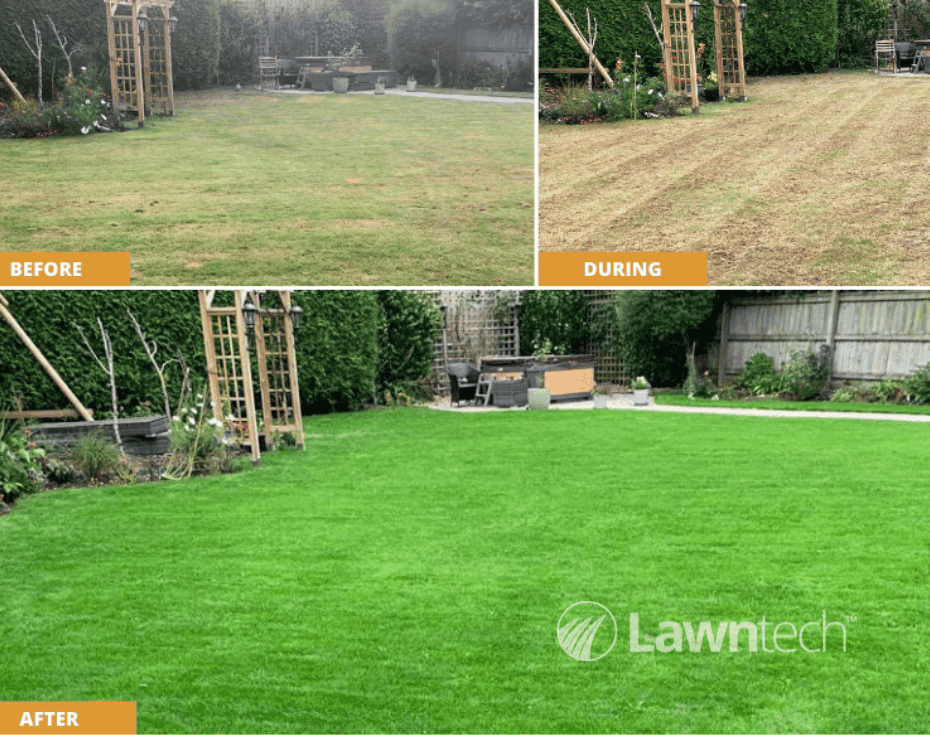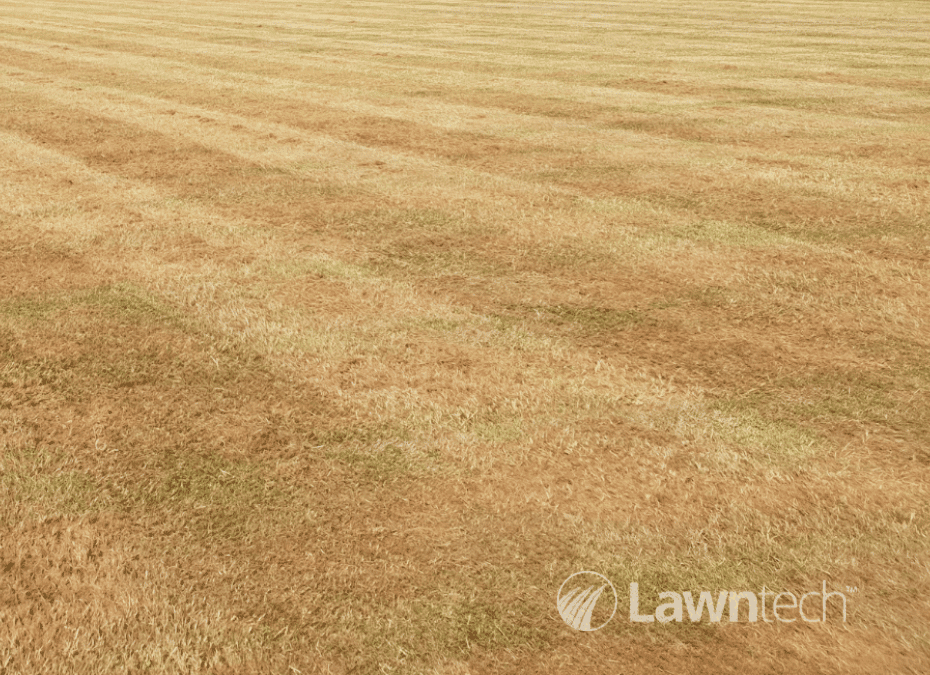We have seen temperatures soar across the UK this summer bringing long periods of dry spells with little rainfall and though we long for warmer weathers and sunnier summers in the UK, the drought does of course bring stress to our much-loved lawns.
Signs your lawn is drought stressed
The recent rise in temperatures saw an extreme weather warning in place for much of the UK with high heats and little rainfall. We saw schools and workplaces relax their schedules to allow people to shelter from the heat, but whilst our lawns were left to be exposed to the conditions, then just like any other plant in your garden, grass is susceptible to drought.

A drought stressed lawn will begin to turn brown and crispy, almost resembling straw.
There are some keys signs to look out for to detect drought stress in your lawn:
- Take a look at your lawn. Grass requires sufficient amount of water to stay healthy, just like any plant in your garden. With this lack of moisture, your lawn will begin to turn brown and crispy, almost resembling straw.
- If you are noticing brown, dry spots or areas of lawn, yet other areas are green in places then these drier areas are likely to be exposed to direct sunlight with little water.
- If areas are exposed yet you are watering, check your irrigation. This may need adjusting to ensure these areas are receiving water. We recommend watering twice a week in the evenings to saturation point if there are no current water restrictions in place.
- You can check the moisture and hardness of the soil underneath your lawn. Using a garden spade, penetrate the soil. If you are unable to do so, then the lawn is too dry. Our technician’s here at Lawntech use a moisture meter for this, but for a domestic lawn it will soon be evident if there is any moisture available to the grass plant when you do this simple soil inspection.
- Footprints can also be a tell-tale sign your lawn is drought stressed. If your footprints remain in the grass when you walk over it and they are leaving behind wilted grass blades, your lawn is certainly in need of water.

We recommend watering twice a week in the evenings to saturation point if there are no current water restrictions in place.
It is important to remember that lawns can go dormant to protect themselves during drought and for most homeowners it can almost be impossible to apply enough water to prevent this. To reassure you, this is a natural defence mechanism for your lawn so try not to worry. With its regular feed through the summer and our drought safe fertiliser to aid in its recovery, your lawn can survive extreme conditions.
You can find out more about our Annual Lawn Care Programme and how this can benefit your lawn at our dedicated page on our website.
Recover your lawn with an Autumn Renovation
As summer turns to autumn, and moisture returns to the soil, you can improve your lawn with our Autumn Renovation Package to include scarification, aeration and over seeding to ensure the lawn recovers and looks its best for next Spring.
Excessive thatch and compaction can restrict water and nutrient availability to the roots, which can result in an unhealthy and stressed lawn that dries out very quickly during periods of minimal rainfall. Mid-August – Mid-October is the best time of year for this intensive service, as warm soil temperatures and autumn showers assist germination and ensure the recovery of your lawn.

Our customer’s tired, worn lawn is lush green and revived following their Lawn renovation.
To find out more about our Lawn Renovation package, contact us today or receive a free, no-obligation quote for our Annual Lawn Care programme here.



